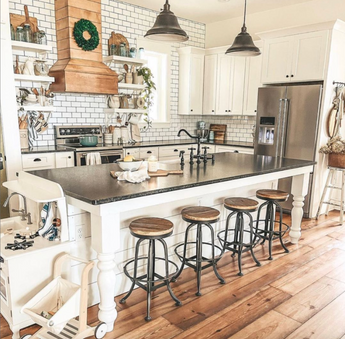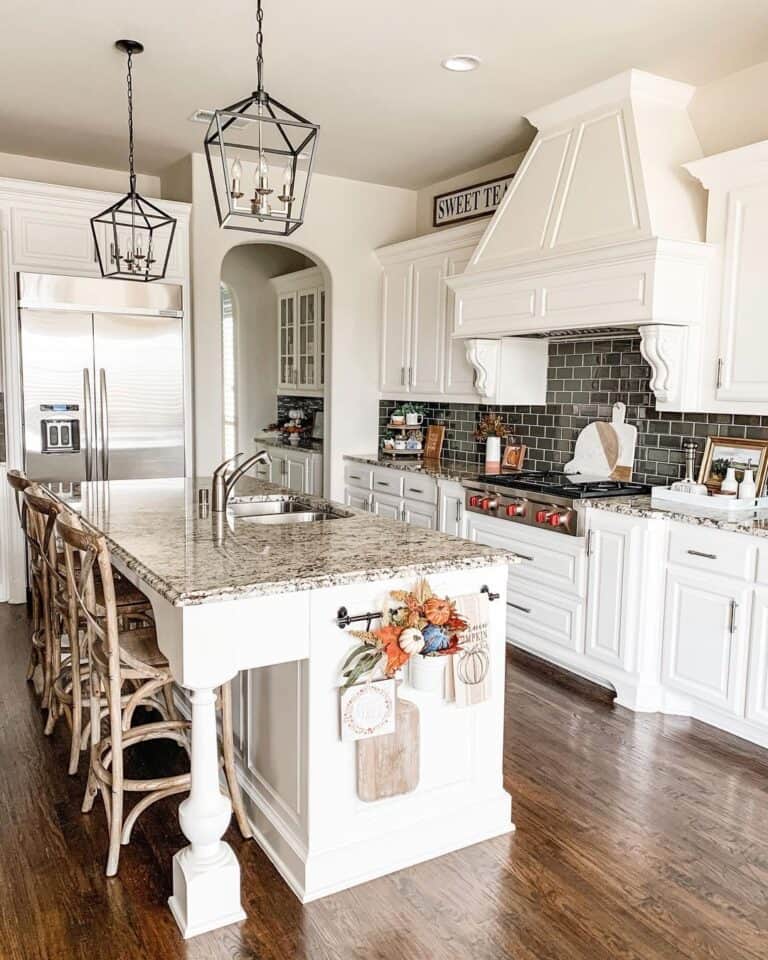Kitchen Island Legs: Boost Your Kitchen with Strong Support
Kitchen Island Legs: Boost Your Kitchen with Strong Support
Blog Article
Vital Tips for Choosing the Perfect Dining Table for Your Kitchen
Picking the ideal eating table for your kitchen area is even more than just a matter of taste; it demands a detailed understanding of your room and demands. The form of the table plays a critical role; while rectangular tables fit larger locations, round ones foster affection, and extendable alternatives provide adaptability. The table needs to harmonize with your cooking area's appearances and accommodate your family members easily.
Measure Your Space
Selecting the ideal table starts with a precise analysis of your offered room. This foundational action guarantees that the table not only fits pleasantly within the area but likewise complements the general layout and performance of your dining area. Begin by determining the dimensions of the room, thinking about doorways, windows, and any kind of existing furnishings. This will aid you establish the optimum allowed dimension for your table.
Consider the circulation of movement around the table. It is necessary to leave sufficient space for chairs to be taken out and for individuals to move the table without obstruction. A basic guideline is to enable a minimum of 36 inches of clearance from the side of the table to the local wall surface or furniture. This makes certain convenience of gain access to and comfort throughout dishes.
In addition, believe concerning the number of individuals you usually entertain and whether you require added space for guests. Choosing an extendable table can give flexibility, allowing you to accommodate varying varieties of diners. By accurately measuring your area, you lay the foundation for selecting a table that boosts both the appearances and performance of your eating area.
Select the Right Forming

On the other hand, round tables are exceptional for smaller kitchen areas or intimate gatherings, as they promote discussion by permitting everybody to encounter each other. They likewise give a feeling of coziness and can fit well in tighter spaces due to their absence of sharp corners. Oblong tables offer the finest of both globes, combining the size of rectangular tables with the affection of round ones, making them functional for numerous setups.
Square tables are one more choice, particularly matched for square-shaped areas. They produce a modern and balanced look, fostering an equivalent dining experience for all seated.
Material Factors To Consider
When picking a table, material factors to consider are critical in identifying the table's sturdiness, upkeep needs, and general aesthetic. Wood is a timeless option, using ageless appeal and toughness. Hardwoods like oak, mahogany, and walnut are especially resilient, though they can be expensive. kitchen island legs. Softwoods, such as yearn, are much more budget-friendly however might be prone to scrapes and dents.
Glass-topped tables offer a modern-day, streamlined appearance and can make a space appear bigger due to their openness. Nonetheless, they need constant cleaning to stop smudges and finger prints. In addition, solidified glass is advised for its added strength and safety and security.

Lastly, composite materials like MDF (Medium-Density Fiber board) or plywood are affordable alternatives. These products can imitate the appearance of solid wood yet may not offer the same durability. They are generally easier to tidy yet can be prone to water damages otherwise effectively secured.
Ultimately, the choice of product must line up with your kitchen's style, your way of life needs, and your budget plan restrictions. (kitchen island legs)
Seating Capacity and Comfort
Exactly how do you establish the ideal seats ability and convenience for your eating table? For a family members of four, a rectangular table of 48 inches long or a round table with a 48-inch diameter is generally enough.
The height of the table should ideally be around 30 inches, giving a balanced ergonomic position for seated restaurants. Chairs must have a seat height of 18 to 20 inches to guarantee a comfy dining position.
Style and Visual Appeal
Selecting a table that matches your style and aesthetic appeal includes balancing individual taste with the existing decor of your dining room. The table is usually the focal point of the cooking area, and its style must match the overall theme of the area. Whether your cooking area boasts a modern-day, minimal look or a rustic, farmhouse beauty, the table you select should balance with these elements to create a natural and welcoming ambience.
Take into consideration products meticulously; wood provides an ageless allure and can range from rich mahogany for a typical appearance to lighter oak for a contemporary feeling. Metal and glass tables, on the other hand, can introduce a sleek, industrial side to your kitchen. Don't neglect the table's form-- rectangle-shaped tables are traditional and versatile, while round and oblong choices can foster an extra intimate eating experience.
Additionally, pay very close attention to surfaces and details. A distressed coating may include personality and heat, whereas a glossy surface area can add to a tidy, modern aesthetic. Ultimately, your table need to not only fit perfectly right into your cooking area's style but likewise mirror your personal style, raising the space both functionally and aesthetically.
Final Thought
In final thought, selecting the perfect dining table for a kitchen area necessitates careful evaluation of space, form, material, seating capability, and aesthetic harmony. Eventually, a well-chosen dining table fosters a welcoming atmosphere and suits the Source household pleasantly, thus improving the dining experience.

When selecting a dining table, material considerations are vital in determining the table's toughness, upkeep needs, and total visual. For published here a household of 4, a rectangle-shaped table of 48 inches long or a round table with a 48-inch size is generally enough.
Don't neglect the table's shape-- rectangle-shaped tables are classic and functional, while round and oval choices can cultivate an extra intimate eating experience. kitchen island legs.
Report this page